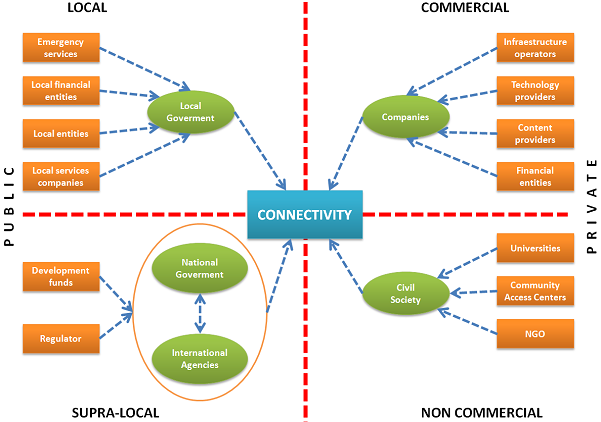Many Smart Cities today employ the concept of a Living Lab: new technologies as well as new approaches to city management are tested in a real-life city environment, allowing users to give feedback and providers to adapt their solutions. The goal is to implement an open collaborative approach to innovation that includes all stakeholders.
The 4 Cycles of Innovation
Over the last five decades the way companies bring innovative products to market has evolved in four cycles:
1. Driven by R&D
Based on science push, mentality of “build it and they will come”, may result in great ideas that have no viable market.
2. Driven by market research
Based on market pull, results in incremental improvements of existing technology, forgoes real innovation.
3. Interactive
An agile combination of the previous approaches to innovation.
4. Open Innovation
More than one stake holder participating in the innovation (e.g. collaboration across enterprises, crowd sourcing, open source software).

Living Lab
In its beginnings the Living Lab was a home environment in a laboratory setting where routine activities and interactions of everyday home life could be observed, recorded for later analysis, and experimentally manipulated. The research participants lived in it as a temporary home. There was a focus on the human user, his/her interaction with technology. The focus of Living Labs today is on open collaborative innovation for any type of new technology that humans interact with.
Characteristics
- All stakeholders participate directly in the innovation process
- Typically organized in form of a public-private-civic partnership
- Co-creation of new products, services, businesses and technologies in a real life environment
- More focus on the ecosystem than the user
- Social and institutional factors are as important as technology and economics
Key Benefits
- Time-to-market & market potential are enhanced by working with users in the very early stages of product/service development
- Crowd-sourcing leads to smarter products/services
- Public-private partnership achieves more sustainable results
Public-private partnership achieves more sustainable results Public-private partnership achieves more sustainable results
Stakeholder Engagement
As with any development project, stakeholder engagement is critical. However, in case of developing a S3C it takes on additional complexity since supporting a growing urban community quickly becomes a highly complex and dynamic task, involving a wide variety of stakeholder types.
The Living Lab is used in conjunction with the S3C Framework Tool - more detail can be found here, and the services that CSRspace provides to assist with an end-to-end implementation of an ICT-based S3C platform can be found here.

Source: Ministry of Transportation and Communications of Peru
